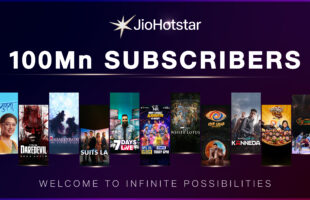
This story appears in the October 2020 issue of Television Asia Plus.
During the lockdown, many OTT providers saw a sharp rise in subscriptions as well as an overall increase in streaming figures. Now that society has started to open up again and audiences are enjoying a wider selection of other activities, the challenge will be to keep viewers engaged over the long term.
The OTT market offers no shortage of platforms and new contenders are arriving all the time. With a saturated market, how can OTT providers make the most of their content and monetise their service effectively?
The SVOD model
The subscription video on demand (SVOD) approach often forms the default setting for a monetisation strategy. For OTT market pioneers, adopting the subscription model as standard was certainly logical. “Try before you buy” offers hooked new users and gave platforms the opportunity to showcase a broad selection of content in order to gain loyalty. However, in markets such as Australia where subscription services are already well-established, providers need to weigh up if this method will suit their offering. Indeed, many households already have multiple subscriptions. Recent reports from AMPD Research & Media Partners Asia show that households are now subscribed to around four SVOD services on average.
A subscription model works best when users have a sense that they are getting value for money. This means content and lots of it. A large back catalogue and new engaging content added regularly justifies the ongoing commitment of a subscription. Local providers have their work cut out if they plan to compete with the global budgets of brands such as Netflix and Disney. In APAC the SVOD market has increased by 19 percent this year already but local SVOD offerings such as HOOQ, iFlix, and Lightbox have all dropped out. New entrants to the market adopting a subscription method will need a keen understanding of their target demographic to make an impact. As well as offering customers alternative value outside of the big players.
The AVOD model
Advertising-backed video on demand (AVOD) offers an alternative for customers who are unable to afford the subscription price tag. As well as tempting those who are just looking to avoid additional SVOD outgoings. Audiences have the benefit of enjoying premium content, without a cost attached, meaning new providers are able to establish an audience quickly. It is then possible to combine the two methods and offer a paid-for premium tier, with no advertising to those viewers able to afford it.
This model is particularly successful in territories where the target audience has a low disposable income but a big appetite for content. Last year, a report from Asia Pacific OTT TV and Video Forecasts, estimated that Asia Pacific OTT TV revenues will reach $48 billion in 2024, and AVOD made up 52 percent of this.
One of the key issues with this model is the potential for churn if the advertising becomes irrelevant. By implementing personalised advertising technology using viewer data, providers can help to ensure that the audience sees only relevant messages. This approach offers greater value, the audience is less inclined to become frustrated and are more likely to engage or at least live with the ads.
The TVOD model
The transactional video on demand (TVOD) approach is a great option for monetising live premium content. In the wake of the pandemic, the sports industry needs to slowly embrace live streaming to provide alternatives to traditional broadcasting. TVOD offers the opportunity for sports rights holders to monetize individual matches, games, or even the last few minutes of games either as a premium offering on their own platform or through deals with other services. Monetising individual games in this way are likely to prove vital, as the sporting sector endures ongoing upheaval due to COVID-19.
Other industries that have previously relied on audiences packing out live venues will have to adapt to the new normal, too. We are now seeing everything from box-office releases to theatre productions, streamed through a pay-per-view option as a way of monetising content during the closure of live venues.
Finding the best approach
There is no one-size-fits-all approach to monetisation, the key focus should be to select the best method based on a number of factors. OTT providers need to think about market trends, the type and format of the content they are offering, as well as the demographic they are targeting. Some may find that dividing their strategy up to incorporate a combination of all three approaches makes the most sense.
It’s clear that there is significant competition in the OTT arena, but we certainly haven’t reached peak consumption by any means. As more and more consumers in developing markets come online, video consumption in those markets rises. What OTT providers will need to bear in mind, is that eager new VOD consumers will become just as selective as established viewers once the market matures. Wherever your service is based, understanding your audience and offering them the appropriate choice will be the difference between success and failure.
Matt Kossatz is Vice President for Asia Pacific at Accedo. Deeply involved in the convergence between traditional media and emerging connected devices for over 15 years, Matt has played a large role in the expansion of the OTT video and technology industry across the Asia Pacific. In his role as VP Asia Pacific, Matt heads up Accedo’s entire APAC business. Prior to joining Accedo, Matt was the General Manager of IceTV Pty Ltd., a pioneer in the digital media space in Australia.








